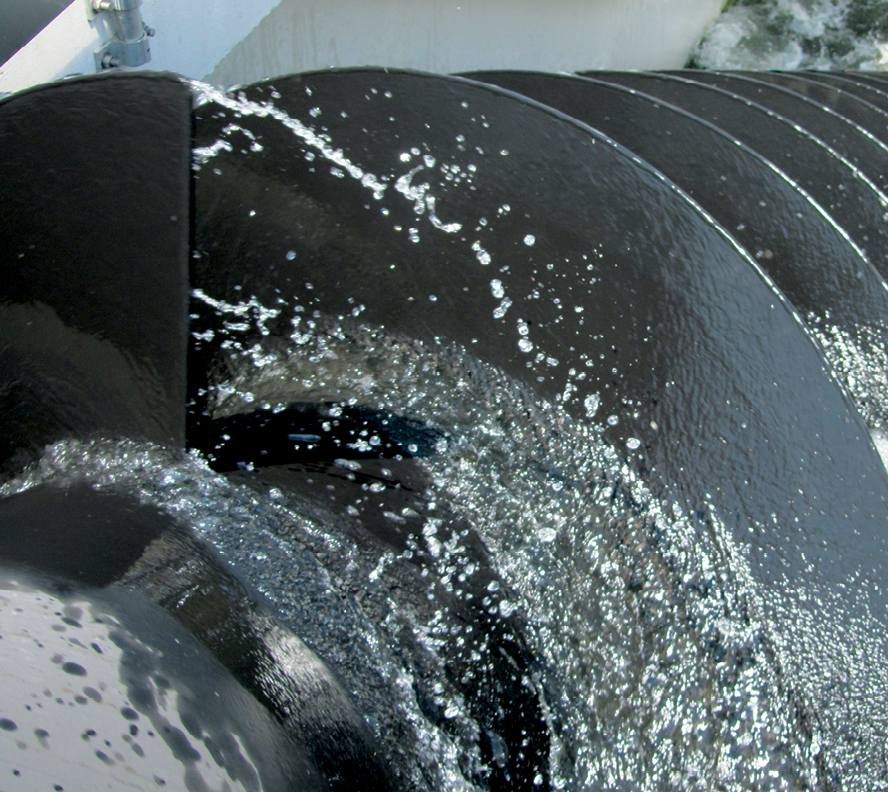The pumps that are used to treat wastewater can be classified as either a centrifugal or positive displacement pump. There are pros and cons to both of these types of pumps, so it’s not always easy to determine which one is right for your needs. To make the right choice, it’s important to learn the differences between centrifugal and positive displacement pumps.
How Centrifugal and Positive Displacement Pumps Operate
To understand how these pumps are different, you must first learn how each pump operates. Positive displacement pumps draw a fixed volume of liquid into the pump through the suction valve, trapping it within a cavity found inside the pump, then forcing it out through the outlet valve. The manner in which the liquid is forced out through the outlet valve will vary depending on the type of positive displacement pump. For example, a piston positive displacement pump is designed to force liquid out using a piston that moves up and down through the body of the pump. Other positive displacement pump models, such as screw pumps and gear pumps, do not have components that move up and down. Instead, these pumps use rotating components to force liquid from one side of the pump to the other.
Centrifugal pumps are known for their simplistic design. The most important component of a centrifugal pump is the impeller, which is a rotating device that moves fluid through the pump. The impeller rotates to draw fluid into the pump, then transfers kinetic energy from the motor to the fluid, which moves through the pump and exits through the discharge valve.
How Pressure Affects the Flow Rate
One of the main advantages of a positive displacement pump is its ability to produce a consistent flow rate. The flow rate of a positive displacement pump will remain constant when there are changes in pressure.
However, this is not the case with centrifugal pumps, which are designed to react to changes in pressure. The efficiency of a centrifugal pump peaks at a specific level of pressure. Whenever the pressure is not at this specific level, the efficiency of this pump will decrease. Therefore, the flow rate of centrifugal pumps will be affected by changes in pressure.
How Viscosity Affects the Flow Rate
Another difference between centrifugal and positive displacement pumps is the way the viscosity of the fluid affects the flow rate. As viscosity increases, the flow rate of a centrifugal pump will begin to rapidly decrease. The exact opposite is true of positive displacement pumps. As the viscosity increases, the flow rate of a positive displacement pump increases as well. This is because highly viscous liquids quickly fill the internal clearances of a positive displacement pump, which produces a greater volumetric efficiency. For this reason, it is important to choose a positive displacement pump to handle liquids that are highly viscous.
Shearing of Liquids
The speed of the spinning impeller found within the centrifugal pump design makes it less than ideal for handling shear sensitive mediums. Positive displacement pumps are not designed with any high-speed components, which means these pumps will not apply a great deal of shear to mediums. Because of this, it is best to choose a positive displacement pump when handling mediums that are shear sensitive.
Suction Lift Capabilities
Some centrifugal pumps will have suction lift capabilities, however the standard models do not. Positive displacement pumps do have suction lift capabilities. Consider the piston pump, which is a traditional positive displacement pump model. The piston is the component that moves up and down to force water from one side of the pump to the other. When the piston moves upwards, the pressure in the body of the pump goes down, which will open the suction valve and allow water to flow freely into the pump. The suction valve will close when the piston moves downward and increases the pressure inside the body of the pump, which pushes the water out of the pump.
When to Use Centrifugal and Positive Displacement Pumps
When choosing a pump, it’s important to consider the conditions in which the pump will operate. It is best to use a centrifugal pump to handle a large volume of low viscosity fluid in a low pressure environment. The centrifugal pump works best when it is transferring water, however it can also handle the transfer of low viscosity chemicals and fuels.
Because of its simplistic design, centrifugal pumps can be made out of a number of different materials, including plastic, stainless steel, and cast iron. This makes it more versatile since its design can be adjusted to fit your needs. This type of pump is also very compact, which makes it the ideal choice when there is not much space for a pump.
Positive displacement pumps are often installed to pump oil, sewage, and slurry. Positive displacement pumps are also ideal for pumping fluids that contain solid materials. In general, positive displacement pumps are used whenever the conditions are not ideal for centrifugal pumps. For example, the flow rate of a centrifugal pump is greatly affected by changes in pressure. Therefore, it is best to use a positive displacement pump when there will be changes in pressure, since this will not impact the flow rate of this type of pump.
To learn more about centrifugal and positive displacement pumps or to place an order, contact Lakeside Equipment Corporation today. For decades, Lakeside Equipment Corporation has been committed to providing high quality and reliable products and services to customers around the world. Let us guide you through the process of finding the right centrifugal or positive displacement pump for your needs. Call 630-837-5640 or visit our website to connect with one of our knowledgeable representatives today.








